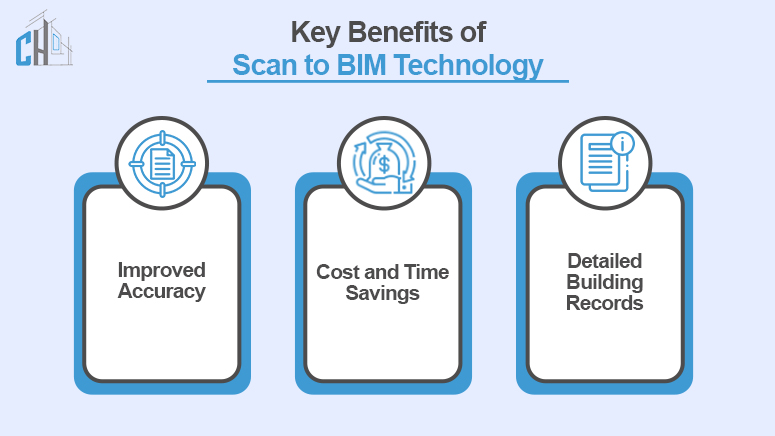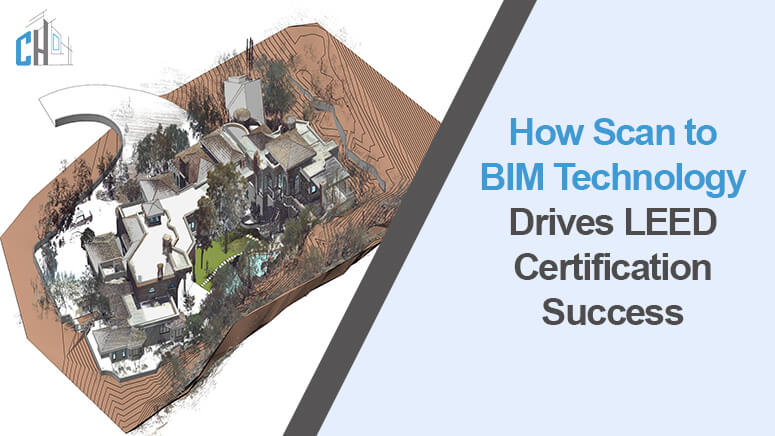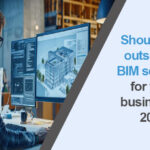Quick summary: The need for green building has never been higher. There is a key to this sustainability, however: LEED Certification – one of the world’s most popular signifiers of sustainable building.
LEED certification proves a level of commitment to environmental issues from the construction industry since architects, building owners, and construction managers seek certification for their buildings and plants since certification leads to enhanced competitiveness, economic profitability, and compliance with sustainable construction standards.
Now it is time to talk about the significantly recent technology called Scan to BIM, which is to revolutionize the construction and renovation industry. However, how do scanning and modeling relate to sustainability goals, especially LEED?
In this blog, let’s explore what has been discussed with reference to Scan to BIM for those who seek to use that technology as a fundamental basis of sustainable construction projects and as the innovative digital design of the near future.
What is Scan to BIM Technology?
Scan to BIM is the transformation of a physical structure into a digital 3D model. The process commonly starts with laser scanning, where millions of points are recorded (point cloud), inclusive of the actual state of the building or a site. This data is then taken into BIM software where it is used to make a real structure in a computer-generated three-dimensional form.
New buildings and existing buildings both, can benefit greatly from this technology known as Scan to BIM. It offers definite dimensions, improves teamwork in preconstruction phases, and makes certain that no other organization has up-to-date information other than those offered through the BIM.
Key Benefits of Scan to BIM Technology:

Scan to BIM technology revolutionizes construction and design by converting real-world structures into accurate digital models.
Improved Accuracy with Laser Scanning for BIM
Laser scanning for BIM offers accurate measurements and features with less expected divergence between the design and the planning phase.
Cost and Time Savings
With the best interest of all stakeholders in mind, Scan to BIM avoids conflicts that would key in on costly mistakes that could lead to additional charges or project delays.
Detailed Building Records
In renovations or retrofit projects, all changes and conditions of an existing structure are capture using Scan to BIM.
With such advantages, Scan to BIM plays an important role, especially when there is a possibility of obtaining sustainable certifications such as LEED.
LEED Certification and the Push for Sustainability in Construction
LEED certification drives global sustainable construction, aided by Scan to BIM for precision and efficiency.
What is LEED Certification?
Leadership in Energy and Environmental Design (LEED) Certification is a globally recognize framework for sustainable buildings. Issued by the U.S. Green Building Council (USGBC), LEED measures environmental performance across key criteria like energy efficiency, water conservation, air quality, and material usage.
There are five levels to LEED Certification including Certified, Silver, Gold, and Platinum depending on the number of credits garnered. To most architects and construction managers, it’s a benchmark for assessing green building initiatives and responding to climate-responsive construction requirements.
Why is LEED Certification Important?
For architects and building owners, obtaining LEED Certification does more than just signal environmental responsibility:
Marketability
The points mentioned in the given tax credit examples show that green certifications increase occupancy demand and sales revenue for owners and tenants of buildings.
Operational Savings
Practices put in place during construction save large amounts of money in energy and water consumption in the course of the life of the building.
Environmental Accountability
LEED Certification links organizational goals with global and local climate change objectives.
However, obtaining LEED certification is a precise process, and Isometric solutions are well-suit to this type of work because they include planning and accuracy.
Supporting LEED Certification With Scan to BIM
Scan to BIM not only streamlines construction workflows but also directly supports various requirements for achieving LEED Certification. Here’s how:
The Approach of Spatial and Material Analysis Improvement
High-density point clouds obtained through laser scanning provide precise geometry of existing structures, thus offering the means to evaluate the types of materials used and the spatial arrangement of structures. All these are particularly helpful for projects that set sights on fulfilling the LEED criteria regarding the utilization of energy and the –reuse of building materials.
Improved Resource Efficiency
Through Scan to BIM, architects come up with precise and detailed BIM models that do not require the purchase of excess materials, which hence avoids wastage, in addition to using components derived from other projects, which is relevant to the Materials and Resources credit category.
Sustainability Simulations
Scan to BIM models enable preconstruction of interactions with the actual environment including daylighting or energy performance. These simulations supply the energy data to satisfy LEED requirements and reveal workable improvements before projects commence.
Accurate Site Modelling for Land Management
This brings forth to Site grading plans, stormwater run-off analysis, and natural resource management (all essential in the process of Leed, more specifically the Sustainable Sites category) that can created/simplified through Scan to BIM models.
Maintenance and Performance Optimisation
This is even more important as a business embarks on its journey to erect a sustainable operation. Scan to BIM models give the owners of buildings sets of data needed for easy operational life cycles of maintaining them and tracking the amount of energy and resources used over time fulfilling LEED’s Building Operations and Maintenance (O+M) criteria.
Finding the right Scan to BIM outsourcing partner can provide added expertise, ensuring projects meet LEED requirements with maximum efficiency.
Future Trends in Scan to BIM for Green Construction
The construction industry has only scratched the surface of what Scan to BIM can achieve. Advancements in artificial intelligence, machine learning, and cloud-based computing are set to unlock an even greater level of detail, efficiency, and automation.
Here are some future developments to watch for:
Real-Time Site Monitoring
Future enhancements to the laser scanning technology will allow for dynamic updates to the 3D models, giving a continual stream of the progress of the work, coupled with the potential to react to issues on the spot.
Integrating IoT for Smart Buildings
Internet of Things (IoT) when integrated with Scan to BIM will develop intelligent structures that are capable of learning and changing with real-time environmental factors, making the building and construction industry even more sustainable.
Simplified Cloud Integration
Cloud platforms will eventually make the outsourcing of Scan to BIM services easier and accelerate coordination between partners with various projects around the world.
With these advancements looming, Scan to BIM will sustain its position of necessary in the pursuit of sustainable and LEED projects.
Conclusion
Integrating Scan to BIM and LEED Certification, the concept of architecture has come to reality from creation to use and later on maintenance. In other words, by providing better accuracy of the created model, better control of resources used, and better simulation of sustainable solutions, Scan to BIM makes transitioning to a green certification path easier than ever.
If your team is ready for this technology, first, select the appropriate Scan to BIM outsourcing services partner to assist you. This means that if you have a reliable partner and the proper equipment and scan to BIM services for your construction project then it will not only be successful but revolutionary in it’s sustainability.
Wondering where to find information about Scan to BIM? Now it’s time to get acquainted with our rich and handy Scan to BIM road map, and be ahead in the race for sustainable and efficient constructions.




